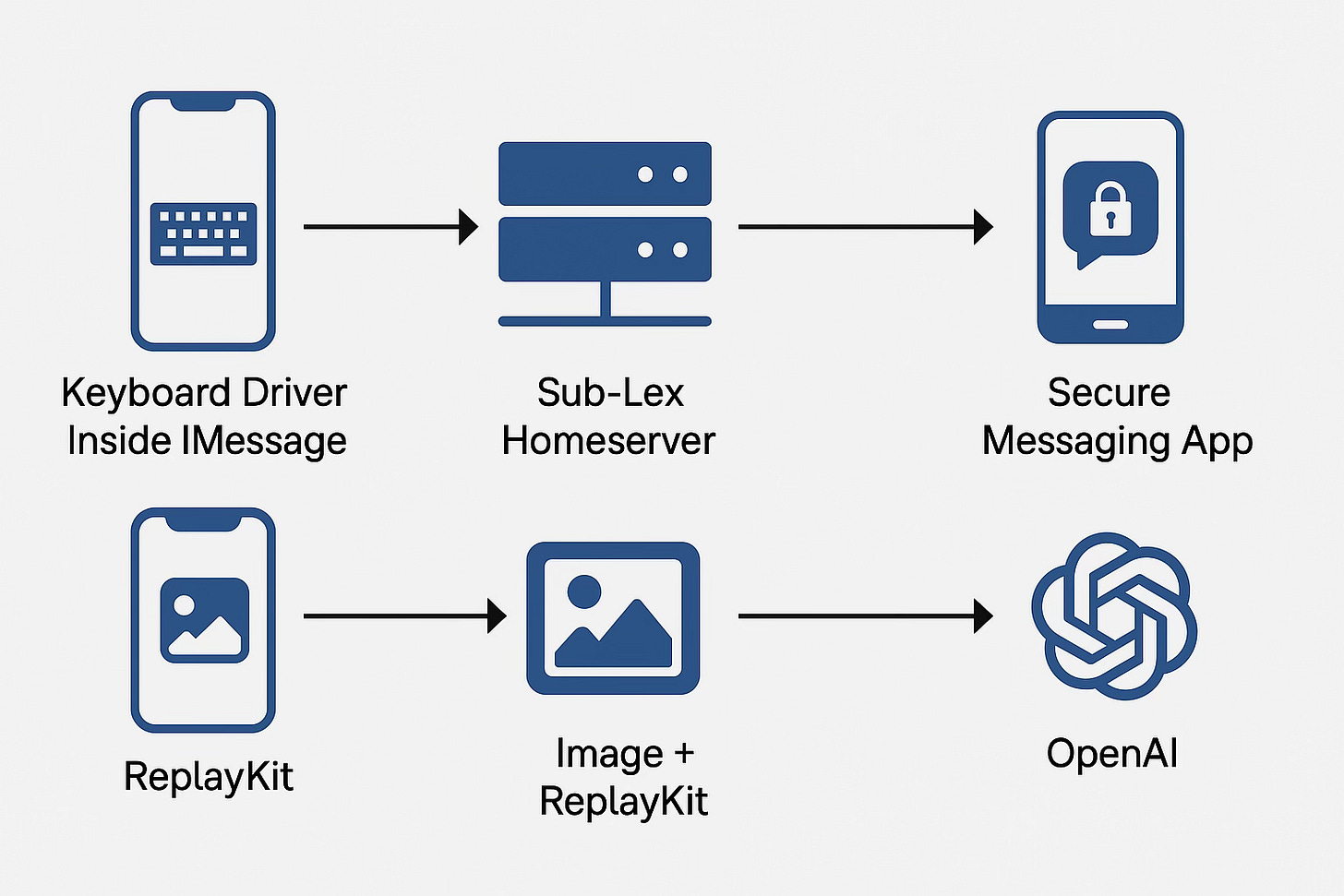Privacy-First And AI Assisted
\
At the core Sub-Lex, our layered messaging protocol designed to embed private communication in plain sight. Alongside it, we’re building a suite of demonstrator apps — not fully exploiting every capability of the protocol (yet), but feature-complete enough to operate in real-world production environments.
The goal? To show that privacy-first doesn’t mean functionality-last.
Introducing PrivateSky Social Media with Embedded Privacy
One of the first major demonstrator apps is PrivateSky — a next-generation social media client centered around the Bluesky and Mastodon ecosystems, with full support for private, layered messaging built right in.
At its core, PrivateSky integrates the Matrix protocol — but with a twist:
Messages are wrapped with Sub-Lex, our custom secure messaging layer. Even when using OLM or meOLM for encryption, an additional layered message is embedded inside, only readable to those holding the correct Sub-Lex key.
This adds an invisible, privacy-preserving layer to otherwise public or federated communications.
PrivateSky also addresses a gap in many decentralized clients by supporting modern WebRTC capabilities, including integration with LiveKit and Agora — bringing video and real-time collaboration into the mix.
This isn’t just about messaging. It’s about owning your presence, securing your voice, and choosing who gets to read between the lines.
Subverse Connect — A Secure Matrix Client, Reimagined
Subverse Connect, our Matrix-based messaging client, is now being built on the same flexible foundation as PrivateSky, which means it will closely follow PrivateSky’s launch on the Apple App Store.
But Subverse almost didn’t happen.
It began life as a fork of Element-X, the open-source Matrix client. Unfortunately, we discovered too late that Element-X’s AGPL license posed a deal-breaking issue: Apple App Store Review typically rejects AGPL-licensed apps unless extensive steps are taken to comply.
That challenge sparked a rethink — and ultimately led to PrivateSky, a new app framework we developed with licensing compatibility, modularity, and Sub-Lex integration in mind. Once PrivateSky was working, we realized we could use the same codebase to power both PrivateSky and Subverse Connect.
Built with Purpose, Time, and AI
These apps — PrivateSky, Subverse Connect, and others in development — are being built on a time-available basis, between paid contract work. But that hasn’t slowed momentum.
With major assistance from LLMs in planning, design, coding, and deployment, we’ve accelerated development far beyond what a solo effort could typically achieve. Think of this as a glimpse into how small teams and AI collaborationcan punch well above their weight.
Together, these apps form the core of our Commercial Privacy-First Hub — practical tools that demonstrate how privacy can be built into systems from the ground up.
We’re taking a hybrid approach to licensing:
MIT License for the majority of the codebase
Some closed-source components to protect critical innovations (such as our Sub-Lex transform logic)
The Third Layer: Open Source Tools That Unlock Secure Messaging Everywhere
Beyond our flagship apps, we’re working on a third set of offerings: open-source tools designed to bring Sub-Lex messaging capabilities to any platform — even those that don’t natively support privacy.
Both PrivateSky and Subverse Connect rely on keyboard and browser extensions combined with a ratchet-style key exchange powered by a secured seed. This approach allows seamless, Sub-Lex–enabled private messaging anywhere a keyboard is accepted — including platforms like Meta, Twitter, iMessage, and RCS.
If you stand up a Sub-Lex–enabled homeserver, this architecture means:
You can send secure messages from within any app
Only recipients with the matching key seed can decode the hidden message
The message itself is embedded invisibly inside plain text
Yes, it challenges the traditional platform boundaries. And no, Apple or Meta might not approve of this at first glance. But the tech is real — and the future is flexible.
We’re also exploring features like a replay-kit tool for iOS, which captures a message screen and sends the image to OpenAI for interpretation — an alternative secure channel for interpretation without needing native platform support.
Whether or not major platforms embrace this, our open-source tools will be out there — showing what’s possible and inviting others to build the future with us.





